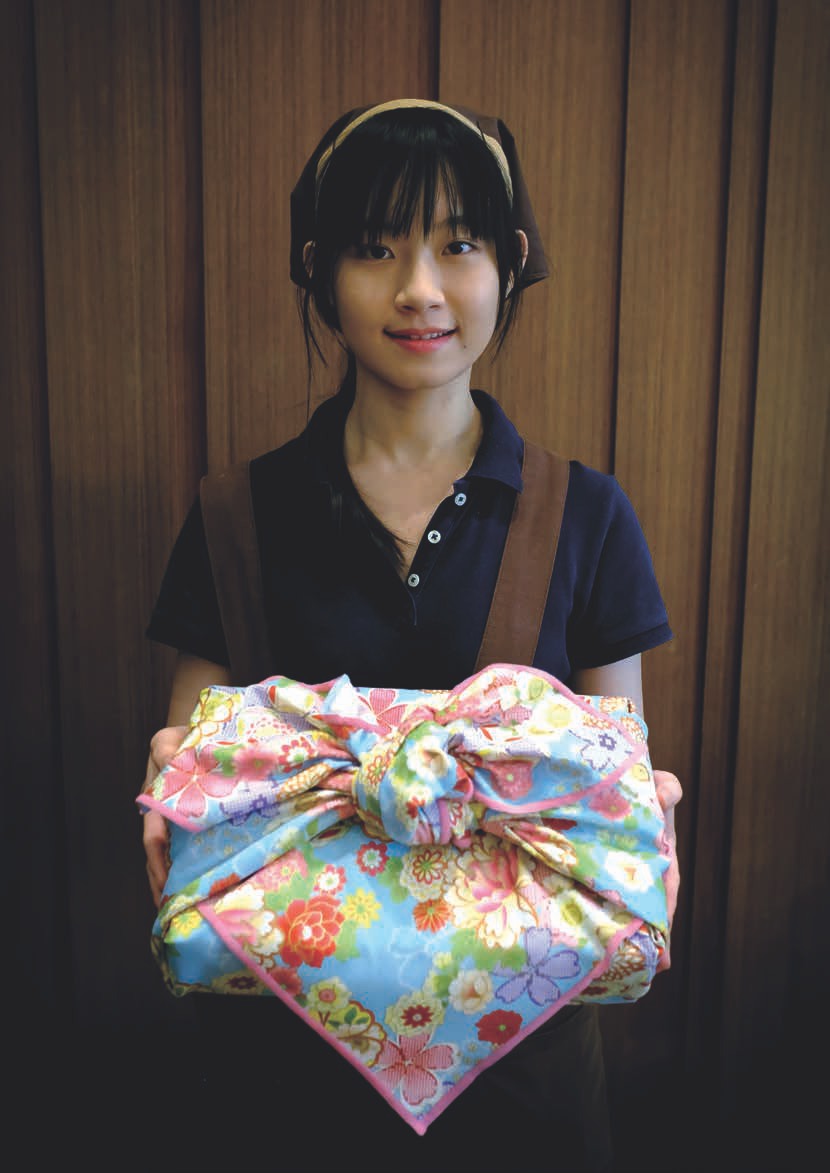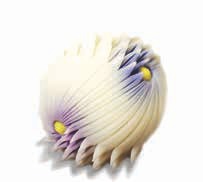
 |
|
When you start pursuing an art like tea, it is difficult to imagine the breadth and scope at the outset. For me, this has been the case with many aspects of a life of tea. For example, I had no idea just how important it was going to be to learn how to cook and clean in order to properly learn how to serve tea, in the larger sense of serving. But ours is a tradition of service, and while we do learn how to brew tea, of course, our priority as Chajin (tea people) is to learn how to serve. And that becomes all-encompassing, down to the last detail. In fact, as I progress, I realize that it is the minuscule details that are the most important details to pay attention to. Too often, the things that we write off as negligible, one later finds, can change everything! The larger, more obvious aspects of serving guests and cultivating a tea practice take care of themselves, naturally falling into place. It's the little things that we then have to focus on refining. And I believe this applies to any discipline. I never could have imagined just how important the meals at our Center are, how much time and energy goes into them, and how many opportunities for practice they offer us! After all, food is amongst the most important medicines we will take on any given day, fueling our paths! Beyond that, tea and food represent hospitality everywhere.
In a tradition founded upon hospitality and service, it should therefore come as no surprise that food and tea were eventually paired together in ceremony; one medicine complementing the other, delighting the senses and awakening us to presence and loving-kindness. And what better type of food to complement tea in ceremony, especially when it is bitter tea, than a delicate, subtly sweet confection? As with so many aspects of culture, the Japanese took this tradition and focused tremendous soul and concentration on it, sparing no detail with regards to sweets for tea. What I am only just learning, the Japanese have long understood, and that is the importance of details. But before we dive into the details of sweets and snacks served with tea, we can briefly look back at some of the earlier forms of tea snacks and their development into the highly refined confections of our modern day.

Long ago, the foods served with tea would have been nuts and fruits and other small, simple snacks. The key word here is simple. "Kaiseki," a Japanese word meaning "meals for tea," was originally a very simple service of food. It was typically a light meal served at the beginning of or during a formal tea gathering. "Kai" means "stomach/ chest" and "seki" means "stone" which comes from a time when samurai or Buddhist practitioners would press a warm stone against their stomach to stimulate energy in the digestive area in order to alleviate hunger and coldness. It therefore represented a meal simple enough to barely alleviate hunger. It usually consisted of small portions of rice, pickles, soup, fish, and even rice wine. Over time, however, kaiseki developed into something so complex and refined that it can even be studied as an entirely separate discipline, completely distinct from the tea ceremony, and only carried out successfully by professionals who have studied the art of kaiseki for a long time. One important trend during the development of kaiseki was an attention to detail and the artistic layout of the food when served. Not only was each ingredient carefully chosen, but the food, and the temperature of the food, were suited to the season. Even the temperature of the utensils used to eat the food was carefully thought out, among many other details that went into the creation and layout of kaiseki cuisine.
As the Japanese tea ceremony became highly refined and ritualized, so too the sweets served in those ceremonies had to meet the same standards of refinement. This is where the attention to detail developed in kaiseki neatly found its way into the service of sweets for tea, including Japanese confections, often called "wagashi," which just means Japanese traditional sweets and isn't necessarily specific to tea. You could say that all Japanese sweets for tea are a type of wagashi, but not all wagashi are a type of sweet for tea. The extensive world of wagashi has changed a lot over time and has been influenced by China and Europe, which has resulted in many different ingredients and production methods. Traditionally, however, they were made from three main plant-based, local ingredients, such as grains, sugar, and beans, especially red beans. And before sugar was introduced from China and Europe, Japanese confections were prepared with other natural plant-based sweeteners. In general, these types of confections often fall into two categories based on their moisture content and production method, namagashi (fresh or moist confections) and higashi (dry confections), with less than 10% moisture content. Nowadays, they are often made using ingredients such as rice, flour, sugar, miso, beans, yams, roots, herbs, flowers, gelatin, jelly, nuts, seeds and sprouts. Many of the fresh sweets with a higher moisture content that we are most familiar with are made using mochi, steamed and pounded glutinous rice, often encasing a sweet red bean paste and designed elegantly to suit the season.
In the same way that a chaxi (tea stage) is designed to honor the guests and occasion by considering the season and weather, so too, tea confections are delicately sculpted to represent a seasonal motif. And similar to chabana (flowers for tea), wagashi should suit the theme of the tea ceremony but not distract from the tea itself. This also includes the dishware and utensils used to display the confections. Some motif examples are plum blossom confections in the spring, maple leaves in the autumn and bush clovers in the winter. An important part of wagashi is how we perceive them. A good wagashi engages all five senses. While it might be obvious how they delight our sense of taste, sight, touch and smell, a well-designed confection should invoke a sound associated with the motif. In other words, it requires a little participation on the guests' part to hear the rustling of autumn leaves or the wind whistling through cherry blossom trees, or to recall a poem attributed to that particular season.
Wagashi used for tea should also be complementary to the tea session. Part of this means they shouldn't be overly sweet, too sticky or chewy, or have a strong, lingering aftertaste. Besides suiting the season, they should be abundant and enjoyable when eaten, and then quickly pass on without leaving a trace that will hinder the guests' ability to enjoy the flavors and aromas of the tea that follows. Like any element in a well-designed chaxi, the way confections for tea stimulate our senses should never overshadow the main focus of the gathering: the tea. This is not so easy to achieve. And like all things tea, simpler is better and less is more. Simplicity is an art in and of itself. Whether one is cooking or baking or crafting confections, using simple, natural, and minimal ingredients to highlight certain characteristics and bring out rich and enjoyable flavors, aromas and mouth sensations is more challenging than using lots of spices or full, rich flavors. This is a challenge worth facing for any person of tea who decides to incorporate sweets into their sessions. The details matter! Many of these principles apply to all aspects of a tea practice.
While it may be common and enjoyable to partake in sweets within the tea space itself, before, during, or after a tea ceremony, we have chosen to separate snacks from the tea ceremonies we offer here at the Center. There are many different approaches to tea, but our primary approach to tea is ceremonial and sacred. Notice that I said "primary" and not "only." At the Tea Sage Hut, we receive guests throughout the year from all over the world, and they bring with them many different approaches and levels of experience with tea, and we want to welcome them all into our home with open arms. After all, if we separate ourselves from others based on our approach to tea, we have forgotten one of the deepest aspects of tea: connection. Tea is the "Great Connector," and no approach or level of brewing skills should ever prevent us from connecting with anyone over tea! That said, our approach to tea is ceremonial, so we have decided to separate snacks from our ceremonies, and enjoy them during more casual sessions, for we do also approach tea casually from time to time. And when we do include sweets for formal occasions, like our weekly whisked tea ceremonies in the Zendo, we serve them outside the tea space, after the ceremony is concluded. But we still do our best to suit the sweets to the occasion and season, and to choose the most appropriate, refreshing confection we can find, or make!




Though this article focused more on Japanese confections, Chinese tea culture has included food with tea for centuries, and has in fact played a huge role in influencing the creation and development of Japanese confections. Chinese teahouses were often social settings where tea was served with light refreshments. Drinking tea and eating food in Chinese teahouse culture served important political, economic, and cultural functions in society. In my experience today, snacks offered at Chinese tea gatherings are much more casual and varied than their Japanese counterpart. You might be served anything from packaged crackers, candies, and sweets to savory buns and baked goods at any time of the session. I would recommend serving food with tea only in a casual setting, not in ceremonies. I would also suggest avoiding certain foods, such as spicy foods, food with garlic, onions, or other overpowering flavors that harm one's ability to appreciate tea, even in a casual session. It is also a good idea to avoid the kinds of snacks that may stick to the teeth or palate, as they will also then interact with the tea you serve. If you aren't sure what sweet to serve, we always suggest going with a bit of chopped fruit. You can't go wrong with Nature's sweets! Beyond that, it can be nice to socially drink tea from time to time and serve a simple snack. I hope you'll be inspired by this magazine to include food service in more of your tea gatherings this month! Serving a snack or meal after a nice, long session of shou puerh is a marvelous afternoon, indeed.

